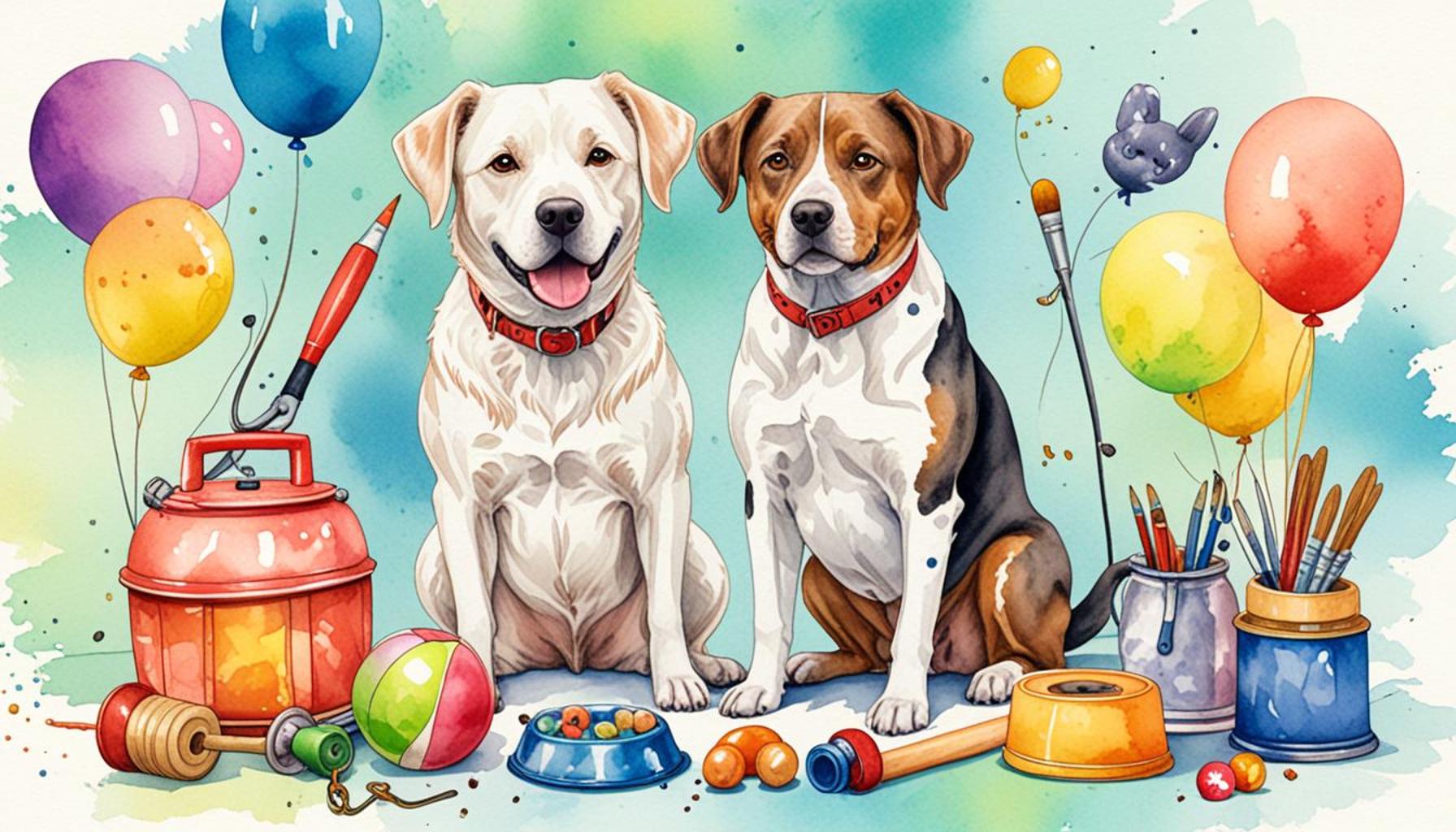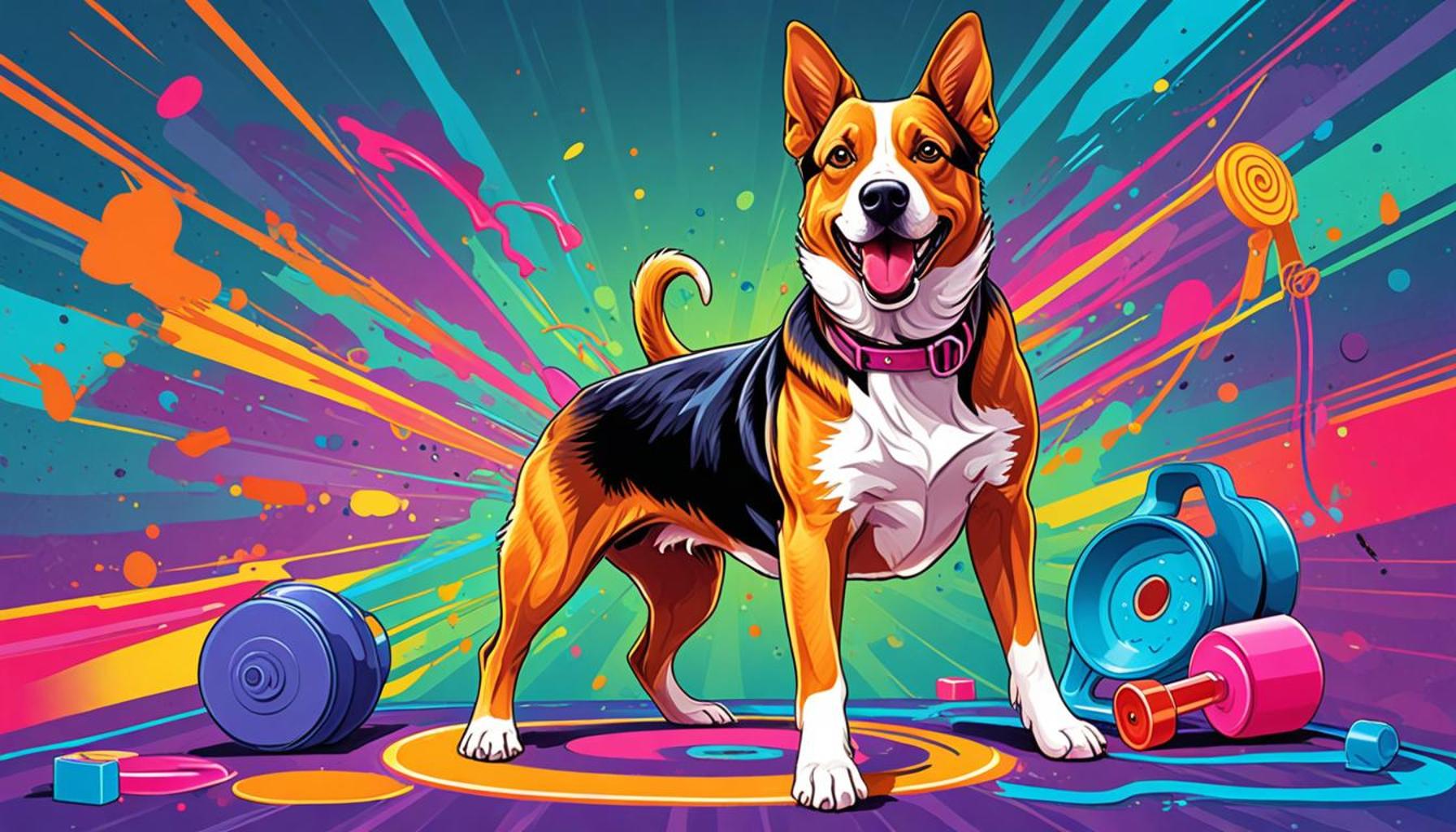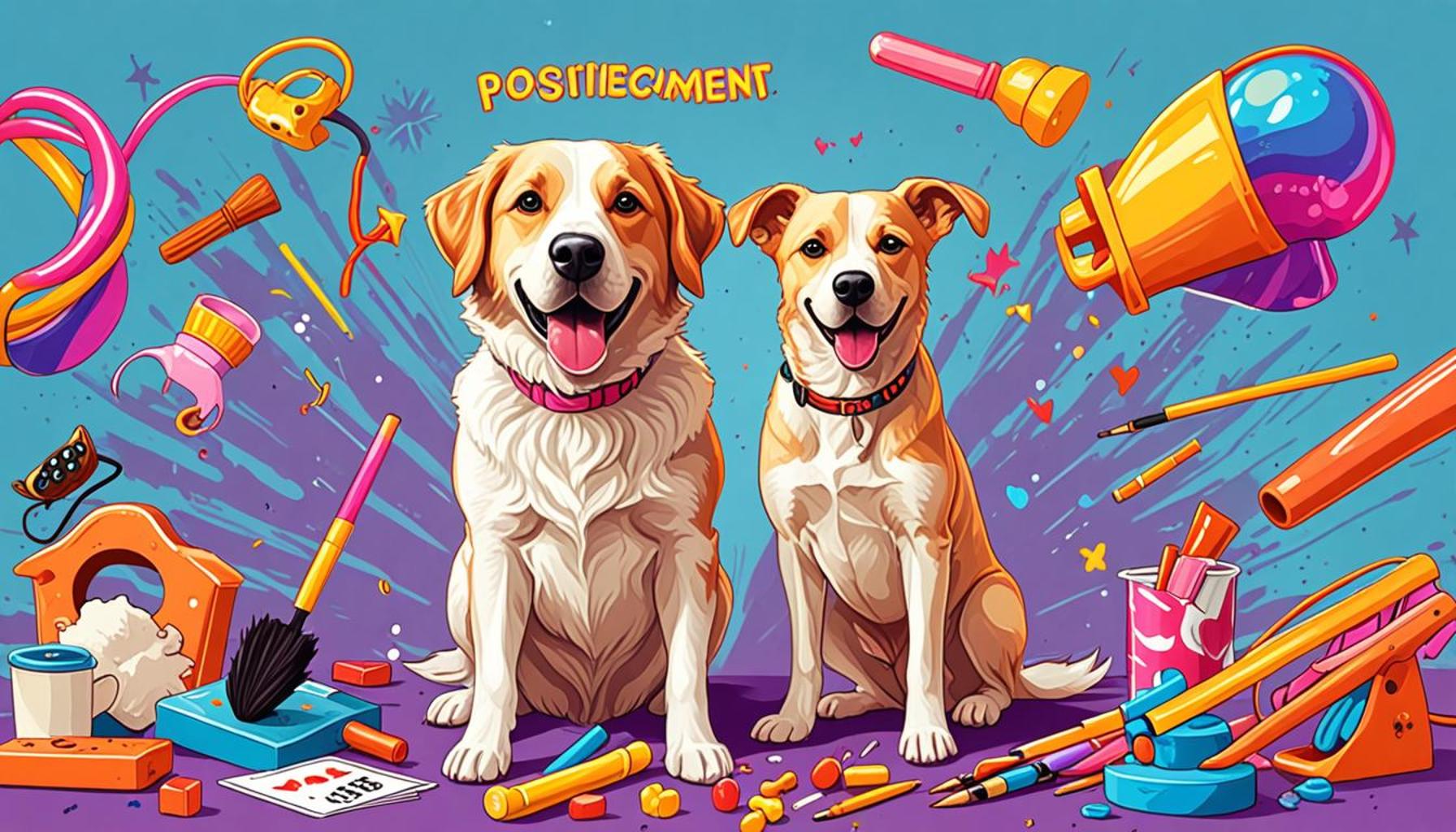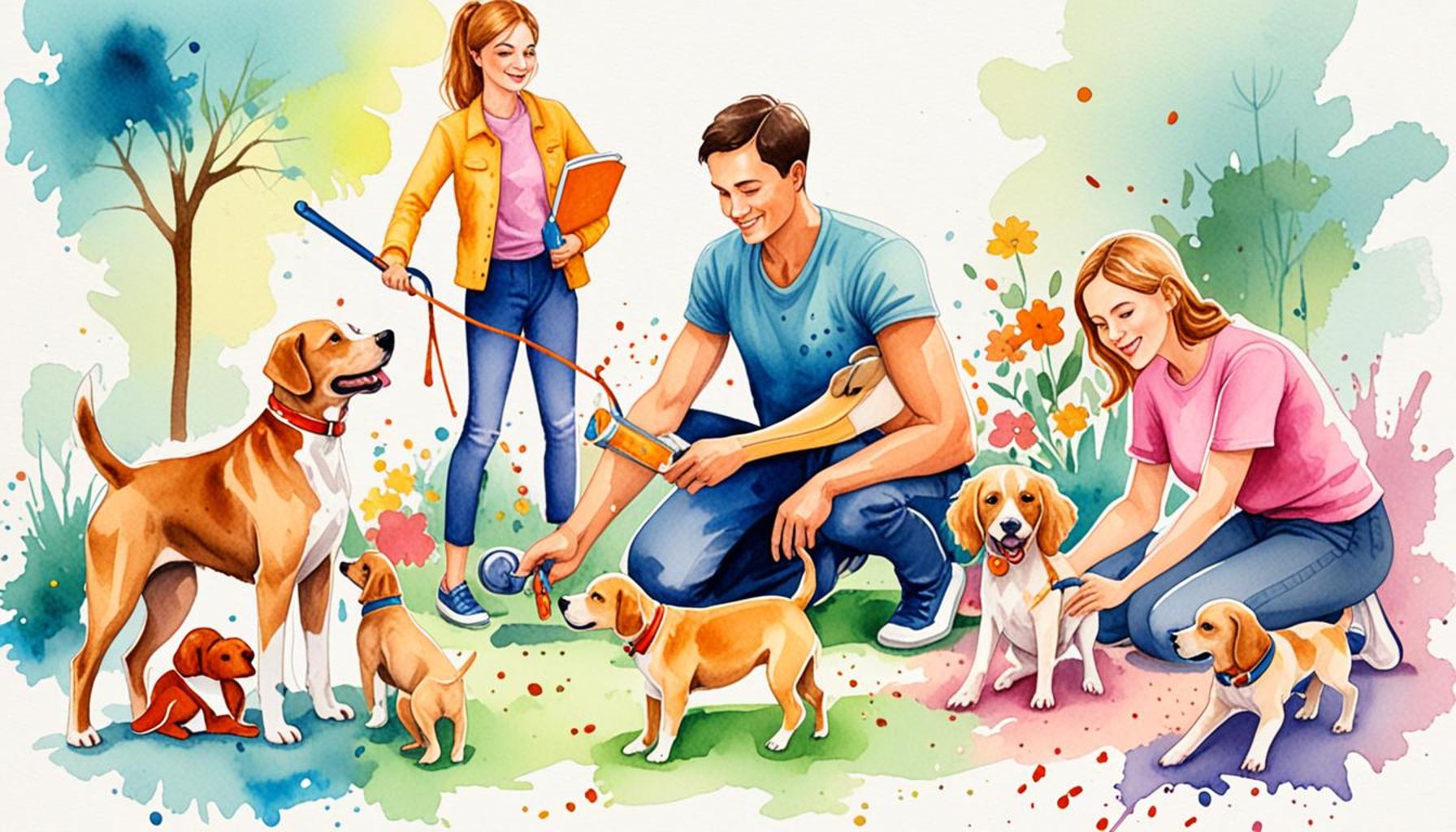Training Senior Animals: Adapting Methods for Older Dogs and Cats

The Unique Needs of Older Pets
As pets age, their physical and emotional needs evolve, making training senior animals a distinct challenge. Older dogs and cats bring a lifetime of experiences that shape their behavior, presenting a unique set of circumstances for their owners. Adapting training methods for these furry companions can yield astounding benefits, enriching their quality of life during their twilight years.
Why Adjust Your Approach?
Training methods that worked for younger animals may not always apply to seniors. Understanding this necessary shift in approach is crucial. Here are some vital factors to consider:
- Physical Limitations: Many older pets suffer from conditions like arthritis or reduced mobility, which can limit their ability to engage in activities that require physical exertion. For example, a senior dog may have difficulty jumping over obstacles or standing for long periods. Training sessions should thus focus on low-impact activities, allowing for sitting or lying down, which enables learning in a stress-free environment.
- Attention Span: Senior animals generally have shorter attention spans compared to their younger counterparts. This shorter attention span necessitates more engaging techniques, such as breaking training into shorter, more focused sessions that hold their interest. For instance, rather than a long walk-through of commands, consider two to five-minute mini-sessions that can be incorporated into their daily routine, allowing them to engage without overexertion.
- Health Concerns: Medications or health issues might alter behavioral responses, sometimes leading to increased anxiety or confusion. It is essential to monitor how medications affect your pet’s behavior and adapt training accordingly. A calm environment, coupled with positive reinforcement, can help mitigate any stress they may be experiencing.
Benefits of Tailored Training
Adapting your training style can lead to a more fulfilling relationship with your older pet. Consider these advantages:
- Enhanced Quality of Life: Training is not solely about obedience; it can keep senior pets mentally and physically stimulated. Activities like puzzle toys or gentle training sessions stimulate their minds and provide exercise, which is crucial for maintaining their overall well-being.
- Improved Bonding: Customized methods foster a deeper connection between pet and owner. Engaging older pets in training offers them mental engagement, while also allowing you to spend quality time together. Shared activities enhance the emotional bond and can significantly improve their mood.
- Behavioral Management: Tailored training helps manage behavioral issues that may arise with age. For instance, an older dog may develop anxiety during storms or other loud noises. Through specialized desensitization training, owners can help their pets cope with these fears, leading to a calmer household.
Understanding and implementing effective training methods for older dogs and cats can transform their twilight years into a time of enrichment and joy. This journey of training senior animals is not just about obedience; it’s about enhancing their well-being and strengthening the bond you share. By embracing patience and sensitivity in training techniques, you can unlock a world of happiness for both you and your beloved companion, ensuring that their golden years are truly golden.
DON’T MISS: Click here for essential tips
Understanding Senior Animal Behavior
As dogs and cats enter their senior years, their behavior can dramatically change, necessitating a careful re-evaluation of training approaches. It’s essential to recognize that age-related transformations can impact a pet’s personality, cognitive functions, and social interactions. Fostering an environment conducive to learning requires a deeper understanding of these behavioral shifts.
Common Behavioral Changes in Older Pets
As pets mature, they may experience various changes that can influence training. These behavioral alterations stem from a combination of physical aging and the life experiences they’ve accumulated. Here are some common changes to consider:
- Increased Hesitance: Older pets may become less adventurous or curious, preferring to stay within their comfort zones. This hesitance can affect their willingness to engage in new training exercises. It’s important to recognize these barriers and gently encourage exploration while ensuring a safe environment.
- Possible Cognitive Decline: Just like humans, senior pets can experience cognitive dysfunction syndrome. Symptoms such as increased confusion or disorientation can make traditional training strategies ineffective. Simple and repetitive commands may need reinforcement to help older pets retain and understand their training.
- Changes in Sensory Perception: Hearing and vision loss are common challenges for older animals. A dog that once responded promptly to verbal cues may struggle to hear commands or follow visual signals. Managers of these pets should consider incorporating touch or scent-based cues to provide clearer communication pathways that respect their limitations.
- Established Routine Preferences: Many senior pets thrive on routine and familiarity. Sudden changes to their environment or training methods can lead to stress or anxiety. Incorporating training into their existing routines can help ease them into new activities while making the process more enjoyable.
Utilizing Positive Reinforcement
Whether you are a seasoned pet owner or new to caring for a senior animal, the cornerstone of effective training lies in positive reinforcement. This method entails rewarding desirable behaviors rather than punishing undesirable ones, making training a more pleasant experience for the pet. The use of treats, verbal praises, or gentle petting can encourage older animals effectively. Here’s how to implement this strategy:
- Short, Fun Sessions: Keeping training sessions brief and enjoyable ensures that pets remain engaged and focused. Aim for frequent, short bursts of training that provide ample reward opportunities to reinforce good behaviors.
- Utilize Familiar Rewards: Identifying what motivates your senior pet is key. For some, it may be favorite treats or toys, while others may respond better to acknowledgment and pets. Use what resonates with your individual animal for the most effective outcomes.
- Celebrate Small Victories: Older pets may take extra time to learn new commands. It’s crucial to celebrate all accomplishments, no matter how small, to build their confidence and foster motivation during the training process.
By embracing these strategies, owners can provide not just training but a fulfilling experience that respects the individuality and unique needs of their older companions. Fostering a positive and proactive training environment will undoubtedly yield rewarding relationships with senior pets during their golden years.
| Advantages of Training Senior Animals | Benefits for Owners and Pets |
|---|---|
| Gentle, Positive Reinforcement Techniques | Improves the pet’s confidence and reduces anxiety. |
| Enhanced Bonding Experience | Strengthens the relationship between the owner and the pet. |
| Increased Mental Stimulation | Keeps older animals mentally active, reducing cognitive decline. |
| Enhanced Physical Activity | Promotes mobility and overall physical health in senior pets. |
Training senior animals requires a tailored approach that emphasizes their unique needs and abilities. For example, gentle and positive reinforcement techniques can enhance their learning experience while providing comfort and safety. By shifting from punitive methods to nurturing practices, owners can foster a trusting environment that amplifies both confidence and reduces anxiety. Moreover, the process of training itself serves as a powerful tool for bonding, enriching the relationship between pets and their owners. Engaging senior dogs and cats in training not only strengthens connections but also adds an enjoyable aspect to daily interactions.Additionally, training can spotlight the importance of mental stimulation. Just like humans, older pets benefit greatly from activities that challenge their minds, helping to stave off cognitive decline. Exercises that involve simple commands or new tricks can keep their brains active, allowing for a more enriching lifestyle.Finally, encouraging older pets to engage in training often leads to increased physical activity. This can be especially beneficial in maintaining their mobility and overall health, allowing them to enjoy a more active and fulfilling life despite the wear of age.With all these advantages, training becomes pivotal in enhancing the quality of life for senior animals, promoting their health and vitality while strengthening the bond with their owners.
DISCOVER MORE: Click here to learn how pet adoption can enhance your mental well-being
Tailoring Training Techniques for Older Pets
Training approaches for senior dogs and cats must be tailored to accommodate their unique characteristics, which often vary significantly from their younger counterparts. Understanding the nuances of training methods that work best for older animals is crucial for both their mental stimulation and physical well-being.
Incorporating Physical Considerations
As pets age, they typically face a decline in mobility, which can limit their ability to participate in certain training exercises. Training methods should take into account any physical limitations while promoting a safe and healthy environment. Here are several key considerations:
- Gentle Exercises: Incorporating light physical activity can aid in maintaining joint health and muscle strength. For instance, harnessing simple stretch exercises or short, leisurely walks can be integrated into training sessions. Consider introducing gentle tugging games with soft toys that engage older dogs without putting undue strain on their bodies.
- Accessible Short Commands: Obedience training can adapt to suit aging pets by using commands that don’t require intense physical exertion. Training for cues like “sit” and “stay” allows for minimal movement while maintaining focus and discipline. Using a command that aligns with your pet’s natural ability makes training both manageable and effective.
Engaging the Mind Through Enrichment Activities
Just as physical activity is necessary for senior pets, mental stimulation is equally essential. Enrichment activities, tailored to their cognitive capabilities, serve as effective training tools that can prevent boredom while sharpening their problem-solving skills:
- Puzzle Toys: Interactive toys that hide treats can engage older pets mentally. As animals interact with the toy to retrieve a reward, their engagement helps maintain cognitive function. The challenge should be matched to their abilities, ensuring a balance between difficulty and achievable goals.
- Scent Training: Utilizing a pet’s natural ability to detect odors can be highly rewarding and mentally stimulating. Activities centered around scent work involve hiding treats and encouraging the pet to find them, which can boost their confidence and provide essential cognitive exercise.
Adjusting Socialization Practices
Socialization remains important even in the golden years of a pet’s life. However, older pets may respond differently to social settings. Understanding their preferences can be vital for effective training:
- Controlled Environments: It’s crucial to create low-stress environments for social interactions. Arranging controlled playdates with familiar, friendly pets may aid in reducing anxiety that could arise with routine socialization.
- Positive Association with New Experiences: Gradually introducing older pets to new environments, people, and pets can mitigate stress. Make each new experience a positive one by using treats and praises, thus linking good feelings with novel situations.
The evolution of an older pet’s capacities opens the door for unique training opportunities. By focusing on their specific needs and capabilities, caregivers can design training sessions that foster both learning and bonding, enriching the lives of senior dogs and cats. Recognizing these subtleties in their behavior and adjusting training accordingly can lead to not only a well-trained pet but also a more satisfying and harmonious companionship.
DISCOVER MORE: Click here to learn about the life-changing impact of pet adoption
Conclusion: Embracing the Wisdom of Age in Training
In conclusion, training senior dogs and cats requires a thoughtful, compassionate approach that caters to their aging bodies and minds. As pets grow older, adapting training methods is essential for fostering both their mental stimulation and physical health. Caregivers should embrace tools like gentle exercises, short commands, and enriching activities that account for any limitations these beloved companions might experience.
The importance of socialization cannot be understated, even for our older furry friends. Creating low-stress environments and reinforcing positive experiences can significantly enhance their confidence and ease their anxiety in new situations. By paying attention to the unique needs of senior animals, owners can cultivate a training atmosphere that encourages learning while also promoting a deeper bond.
Training older pets not only enriches their lives but also deepens the human-animal connection, providing a rewarding companionship that stands the test of time. As we strive to understand and adapt to the changes our pets experience with age, we allow them to continue thriving well into their golden years. By implementing these tailored training techniques, pet owners can contribute to their senior pets’ quality of life, ensuring these cherished animals feel engaged, comfortable, and loved.
Ultimately, prioritizing the needs of older dogs and cats in training will lead to a fulfilling journey for both pets and their owners. For those interested in further enhancing their senior pet’s training experience, numerous resources and expert advice are available to help navigate this rewarding process.


